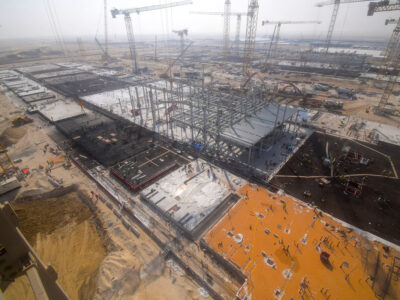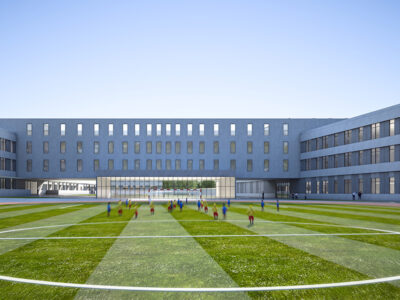How can smart metering systems benefit building owners, tenants and facilities managers? facilities management Middle East examines the operation and advantages of this growing technology.
The use of smart meters and sub-metering systems is rocketing worldwide, with the technology expected to become virtually a standard feature in buildings within the near future. As governments aim to raise their country’s green credentials and utilities firms seek to reduce consumption and optimise the use of available power and water supplies, the application of such automatic smart metering and sub-metering systems are being seen as ideal solutions.
In fact, the technology is seen to be so beneficial that several countries have introduced legislation covering their application. Smart meters were introduced as a standard in the UK in 2008 by First Utility for customers in the Midlands. In December 2008 the UK Department of Energy and Climate Change announced a plan to install the meters in all homes by 2020. The Republic of Ireland’s Green Party Minister for Communications, Energy and Natural Resources has also pledged to introduce smart meters in every home in the country by 2012 and a European Parliament mandate require EU member states to have in place smart meters with 80% coverage by 2020. Many other countries worldwide have taken similar pledges, with the USA and Scandinavian countries being among the biggest drivers of the technology.
In the Middle East, the recent focus on energy efficiency and sustainable buildings is making these systems increasingly popular. In addition, the risk of insufficient utilities services being available to meet demand in the fast developing region means solutions are being sought to reduce consumption. Sub-metering has been implemented in a large number of projects across a wide range of sectors and the technology being applied is becoming more sophisticated.
One of the biggest benefits of the systems in this region is the ability to provide more accurate billing to individual users, with high-rise, multi-tenanted buildings the norm. In addition to ensuring that tenants are only charged for their actual consumption, this has been proven to provide both financial and operational cost savings to the building owners due to a drop in consumption.
“There is a clear difference in the consumption of energy as well as water in measured and non-measured cases,” reports Jarmo Heikkinen, general manager, Kamstrup Middle East. “At least 20% energy savings can be achieved as standard after meter installation according to European experience,” adds Heikkinen. “Definitely once the [metering] display is in a residence and monitored by the consumer they will see how they can minimise their usage and this will help the utilities,” agrees Bobby Krishnan, sales manager, Elster Metering. “A 30% reduction in use is possible,” Krishnan adds. In some cases
up to 40% energy savings have been achieved by the installation of individual tenant meters.
Smart metering in operation
In general, smart metering involves the use of advanced meters that have a number of additional functions to traditional versions, such as real-time sensors, power outage notification, and power quality monitoring. These functions enable the meters to accurately read consumption in real time, measure consumption over set time periods and can include the calculation of flexible energy tariffs. This data collected is then communicated automatically via a network to a central location for monitoring and billing.
Rather than a single meter being installed for an entire building and the bill for usage being divided equally or according to the space used, individual meters are installed for every space or user and bills made according to actual consumption. “If no meters are used the only way to share the cooling energy bill is to use square meter based billing,” stresses Heikkinen. This is of particular issue for building users that are not permanently based in their office or apartment and can cause significant knock-on effects for both developers and utilities consumption.
“If, for instance, a tenant is living in their apartment for two months per year they still have to pay for cooling [they have not consumed when a single-metered system is in installed],” explains Heikkinen. “This does not encourage the tenant to switch off the cooling, neither is it fair for them. At the end this will increase living costs in the building and the owner of the building will find it more and more difficult to find new tenants after awareness of the matter spreads in the tenant market.”
A typical smart metering system includes the installation of cooling energy (BTU) meters in the chilled water circulation pipe lines. A data collection module is included inside the meters and wired M-Bus or wireless radio hard wire system installed in the building; plus data collection software installed in a PC at a central location either within the building’s facilities management control centre or off site.
“The overall operation of a system depends on whether [the operator] wants the features built-in or externally; the most important features are the software, communications system used and the meter itself,” explains Krishnan. “The type of communications system used depends on the type of building system installed, some have good infrastructures so PLC can be used, whereas others need to use GPRS technology,” Krishnan adds.
Automatic Meter Reading (AMR) systems operate without manual intervention and typically collect the consumption values every night. “The meter data [collected] can be used for analysing the operation of meters and the whole cooling system; it is very, very valuable information,” stresses Heikkinen. An AMR exports the data into the billing system on a regular basis, with invoices thus produced for tenants.
The pros and cons
A number of disadvantages associated with smart metering system have impeded its larger take-up to date, however a growing knowledge of the systems’ operation and technology advances, plus external factors such as pressure on utilities resources and the drive for energy efficiency are helping to overcome these issues.
Capital costs; the dissemination of the data collected; and future-proofing of systems are among those factors cited as disadvantages of the technology. In addition, privacy issues have recently been questioned in some countries such as the Netherlands.
The advantages offered by the systems far outweigh any potential disadvantages. In addition to fair billing for tenants and reduced energy and water consumption due to user awareness of consumption, lower maintenance costs are possible. Heikkinen explains: “[The systems enable] a survey of operation of the meters, which indicates to the operator possible meter failures and enables a quick reaction and no need for energy use evaluation for non-operation time,” explains Heikkinen. “A survey of operation of the cooling system gives information of blockages, bottle necks, unbalance etc of the network,” he adds.
Lower impacts on the mains utilities services is also possible as is optimising of usable supply. This is a particularly important factor in a region where the demand for utilities due to the fast construction of new buildings has been seen to outstrip the available supply in some areas. “[Smart metering systems] mean building owners can plan for future upgrades and can have a demand response feature, which allows them to shed load to other areas of the building [with greater demand] when needed,” explains Krishnan.
Product developments
The technology for smart metering continues to advance, with some of the latest developments including new survey possibilities and wireless data collection. Power Line Carrier (PLC) communication is one of the latest features to reach the Middle East, reports Krishnan. Already used in other areas of the world this involves using the existing copper cable to transmit the information from the meters and is cheaper than some alternative methods. “No-one has used here yet but there are two projects in the pipeline, so we should see results in one year,” reports Krishnan.
A number of products are offered by manufacturers for use in smart metering systems. Kamstrup’s portfolio includes the Multical 601 advanced calculator and Ultraflow 14 flow sensors. Ultraflow 14 is a static flow sensor based on the ultrasonic measuring principle for use in cooling installations that have water as the heat transfer medium. Multical 601 receives volume pulses from the connected Ultraflow 14 and calculates the energy for every pre-determined water volume. The energy calculation includes temperature measurements in flow and return as well as correction for density and heat content according to EN 1434.
Kamstrup has recently introduced a USB Meter Reader to the region, which enables reading of electricity, heat, cooling and water readings in three to five seconds; involves no complicated IT set-ups and offers a low cost solution for small systems. The firm has a number of further launches planned for 2010. The MC402 cooling energy meter range is scheduled for release in July. In the same month the firm plans to launch the M-Bus Master, which provides cost savings by enabling the integration of AMR and BMS in the same network.
Elster Metering products are available in the UAE from Al Tayer. The firm offers total enterprise automated meter reading (AMR) and advanced metering infrastructure (AMI) solutions that can be tailored to meet individual client metering system needs. Elster’s advanced energy information management systems enable utilities, energy marketers and customers to monitor and manage electricity usage, power quality and reliability. It’s EnergyAxis smart metering solutions are engineered on open standards, allowing interfacing with a wide range of third-party technologies.
Elster’s Meridian enables users to automatically perform meter data acquisition, analysis and reporting; streamlining processes, lowering costs, ensuring consistency, and improving productivity. Data from meters can be read and consolidated into reports or summaries for analysis and forwarding to others. Meters can be read remotely via telephone or locally via direct-wired connections. Automated scheduled meter readings can be set up for varying time periods according to client needs. Billing registers, interval data and power quality information can be read and stored, thus enabling valuable historical meter data analysis.
Smart metering and energy management solutions specialist Landis & Gyr also offers a wide portfolio of products in the Middle East including meters for residential, commercial and industrial applications. Its scalable AMM software has open architecture for easy localisation and customisation. A fourth generation AMR system, it offers flexible metering and billing.
The firm’s Imega software enables automatic meter reading via the internet, lowering communication costs and shortening reading times. Imega is the interface between a meter and an automatic meter reading (AMR) system and can manage a list of dynamic IP addresses of internet-connected meters.
• Fair billing for tenants, who pay for actual consumption.
• Encourages energy and water saving as users are more aware of consumption.
• Reduced impact on the utilities services due to reduced overall consumption.
• Advanced systems indicate potential meter failures, simplifying maintenance and reducing breakdowns.
• They can be used to survey the cooling system operation giving details on blockages, bottle-necks and unbalance, enabling corrections for efficiency.
• Real-time consumption data available.
• Reduction in maintenance costs.








